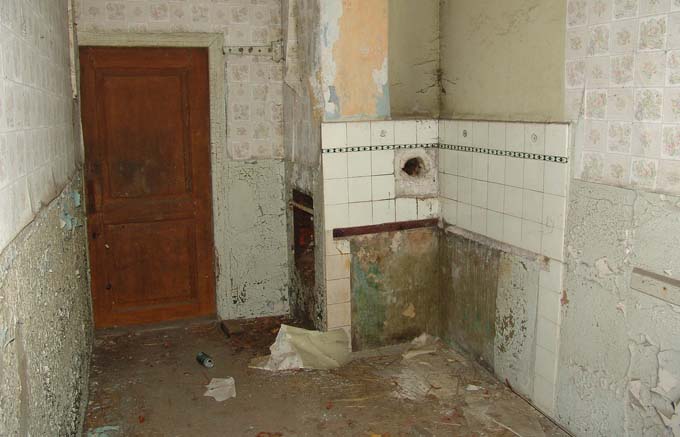Pollutants in buildings: it's not to be trifled with
Pollutants are often found in properties older than 30 years. As long as no work is carried out on the affected components, there is usually no direct risk for the users of the building. If, on the other hand, conversion and renovation work is planned, a pollutant check is required in advance - the same applies before the purchase of an old building.

Hindsight is always wiser - this saying also applies to some building materials that were very popular in the past - when people didn't know any better - but are now considered pollutants. The list of such materials includes some that are currently still installed in many older residential buildings. "As a rule of thumb, we can assume that delicate pollutants can be found in a good half of the buildings built before 1990," says Roger Achermann, owner of Achermann Bau und Sanierung AG in Winterthur. The company has been active in pollutant remediation since 1985. The year 1990 is considered the limit with regard to building pollutants, because from that point on the use of the particularly dangerous asbestos was banned in this country. In addition to asbestos, polychlorinated biphenyls (PCBs) and polycyclic aromatic hydrocarbons (PAHs) are also among the sensitive materials that have been used in residential buildings. PCBs are found, for example, in joint sealants on facades, in paints for basement floors, and in fireproof painted surfaces. PAHs, on the other hand, are found in tar-containing products - for example, in old roofing felt or tar coatings in cork insulation in the window area. Asbestos is found, for example, in roofing and siding shingles, as a component of piping or in plasters, cement adhesives for ceramic tiles, electrical panels and on the underside of plastic flooring. "In fact, you can come across asbestos anywhere in a house," says expert Achermann. All three pollutants have one thing in common: As long as the materials in which they are contained are not worked on or damaged, they generally do not release any harmful substances.
Testing before purchase
However, they become an issue during renovation and conversion work. And even when buying a house that is more than thirty years old, you should pay attention: Anyone who buys an old building is usually planning to make changes to it. If you come across pollutants in the process, it can quickly add up to a lot of money. "The professional asbestos removal of up to ten square meters of tiling in a bathroom, for example, quickly costs between 3,000 and 5,000 francs," says Roger Achermann. Costs that you then have to pay as a fresh homeowner in addition to the renovation. "When we advise clients before they buy an old building, we always recommend that a professional building pollutant analysis be carried out," says Veronika Harder, a building consultant from Zurich/Eglisau and a board member of the Chamber of Independent Building Consultants. Depending on the number of samples that have to be taken, this can quickly cost between a hundred and a thousand francs, but it creates budget security and may have another advantage: If there are only a few potential buyers for the property, the expected costs for the remediation of the pollutants can also be included in the purchase price negotiations.
Pollutants: testing before renovation
Anyone who owns a property built before 1990 may also be affected by pollutants. If conversion or renovation work is planned, a pollutant check is also a must. If you are unsure about the pollutants, you are gambling with the health of all the residents and that of the workmen, because released pollutants such as asbestos fibers are easily inhaled and can be distributed in all rooms. If a building permit is required for a remodeling project, the authorities also stipulate that the pollutants must be tested. If the construction work is carried out by professionals, they usually require preliminary clarifications for the relevant properties anyway, regardless of official requirements. "Reputable companies do not carry out work on old buildings without being sure that all pollutants have been removed. This is because contractors bear responsibility for the health of their employees and can also be sanctioned by SUVA in the event of violations," says pollutant remediator Roger Achermann. A specialist is not always needed to search for the pollutants. If, for example, you only want to tear out an old plastic floor covering, you can carry out the sampling yourself using special sampling kits that are available on the Internet. And the costs for professional removal do not always have to be so high, as in the example of the bathroom mentioned above. Components containing harmful substances that are only fastened with screws, for example, can often simply be removed by a craftsman with appropriate care and disposed of in accordance with the applicable guidelines. How to handle which material has also been defined by SUVA in instruction sheets, which craftsmen use as a guide. And even if more extensive remediation by specialists becomes necessary as a result of the test results, it is worth the price several times over - because ultimately it is about the health of everyone involved.
Further information
Information on the subject of asbestos at the Federal Office of Public Health: www.abestinfo.ch
Advice on all aspects of real estate construction: Chamber of Independent Building Consultants www.kub.ch









